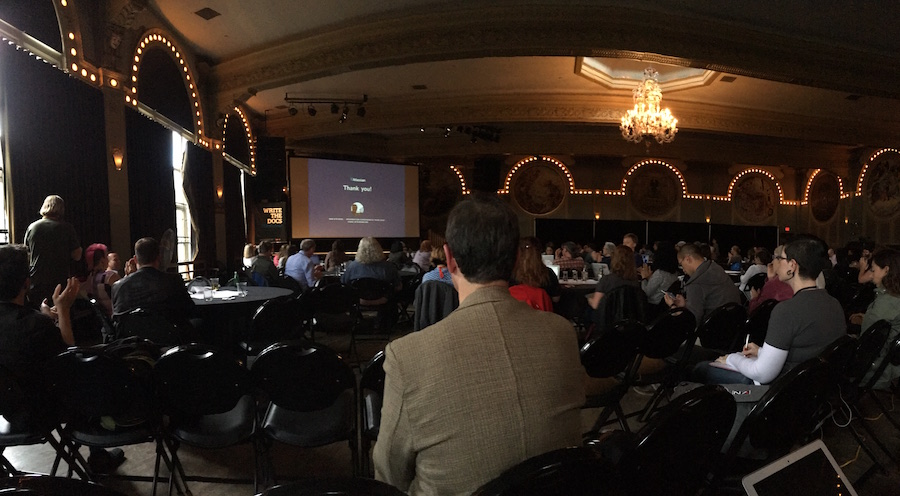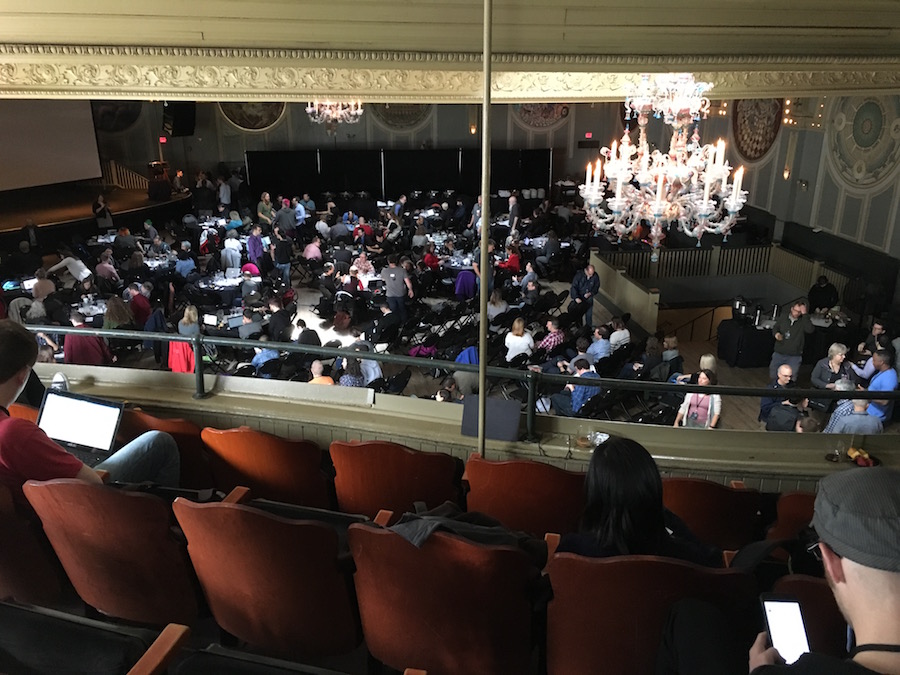The first conference I attended during my trip to Portland for the last two weeks was this year’s edition of WriteTheDocs NA. I been to the first European WTD last year in Prague and absolutely wanted to see if the North American sister-event could keep up with that. Yes it could 😉
As was the case in Prague, the conference’s attendees were mostly technical writers but also a handful developers and other professions had found their way to the McMenamins Crystal Ballroom. Sadly, Ulrich and I couldn’t be at the sprints as our planes arrived late on Sunday but at least we could be there in time for the main conference event 😊

Great talks and large crowd.
Same as last September I learnt a lot about other companies approaches to documentation and general best practices for improving all aspects of it. One big point was that gathering as much analytics data about and feedback from your readers and customers is extremely important to be able to set the right priorities. Even simple like/don’t like indicators can help a great deal but the more information the better ([Betsy Roseberg][] and [Brianne Hillmer][]).
Later Thursday Bram drew some comparisons between writing documentation and writing fiction as everyone enjoys a good story and bringing emotions into the text help readers connect. On the other hand, “documentation is not a place for plot twists”. It usually also helps to provide a recommended reading order while still allowing users to find their own path if they want to.
According to Ruthie BenDor the style of your documentation also depends heavily on why you documenting and for what audience. Blog posts, show-and-tells, they all have their places but try to avoid splitting your documentation into too many places just because one author found that tool convenient while another preferred a different tool altogether. Also: Re-evaluate your methods regularly!
Earlier I had learnt from Britta Gustafson that the US government has a couple of supporting agencies among them 18F which specialises in IT consulting and publishes tons of tools and documents through Github. It’s hard to imagine the amount of excitement that Britta showed for her work coming from an Austrian government employee. Perhaps in the next generation 😉
When it comes to tools I learnt about Slate, which can be used for documenting APIs, and YarnSpinner which should help you keep your dialog structures in order and is used for multiple game projects right now.
Well, these are my main take-aways from the main event. Let’s talk now a little bit about everything surrounding it.
First: The venue. As the name implies, it was a ballroom, very open and with lots of places to either talk with people or stand/sit and enjoy the talks. The first couple of rows has round table where people could work on stuff while listing to the speakers, which was a really nice touch. Perhaps the only thing I didn’t like about the place was the floor, which speaks against using ballrooms as conference venues. You really feel it when someone walks to their seat 😉

View from the balcony of the Crystal Ballroom.
On Monday the conference also featured a social evening event taking place in the Jackknife, a really nice bar just a few minutes away from the conference venue with a decent selection of beers and cocktails. A great opportunity to get to know more of the folks there 🙂
In general the event was very intimate. There was nothing separating the speakers from their audience after their respective talks. They were simply part of the same big community. For me personally it’s the perfect event to find help with improving what I care a lot about: documentation and making it easier for new people to use what I and others have built. I can’t imagine a more welcoming place for that. A big THANK YOU to all the organisers, speakers, and helpers who made this possible!
Will I come again? Well, I’m pretty sure I will be able to attend WTD Europe later that year 😉
Btw.: Videos of most if not all of the talk are already online!

Do you want to give me feedback about this article in private? Please send it to comments@zerokspot.com.
Alternatively, this website also supports Webmentions. If you write a post on a blog that supports this technique, I should get notified about your link 🙂